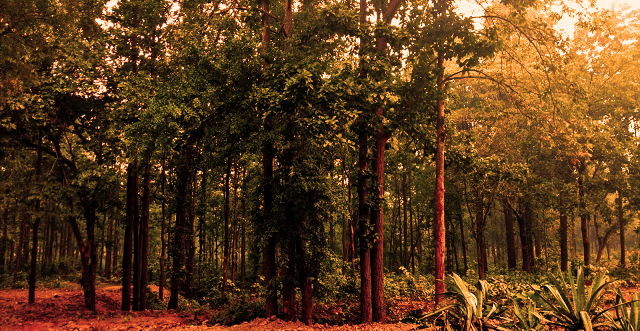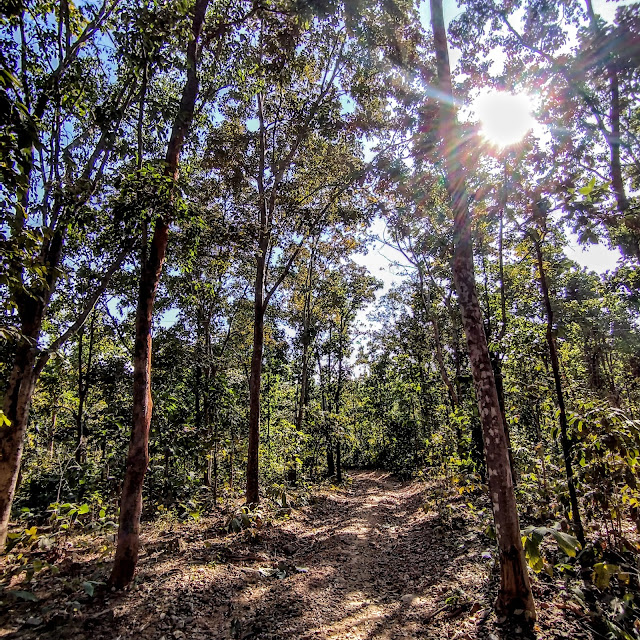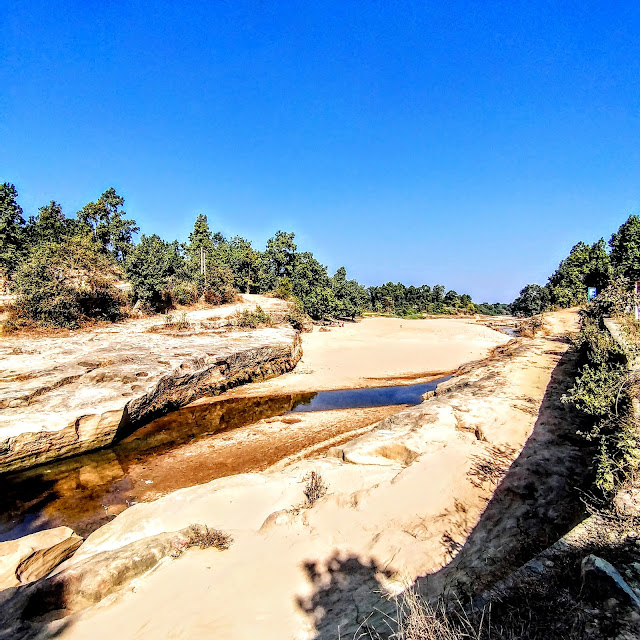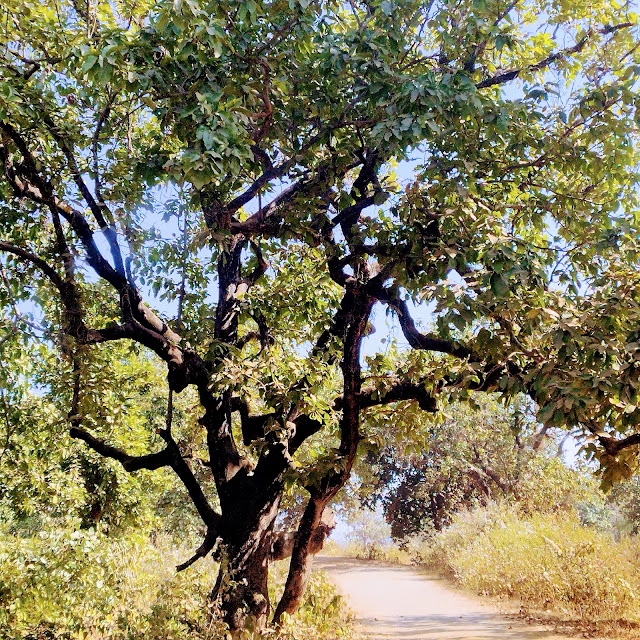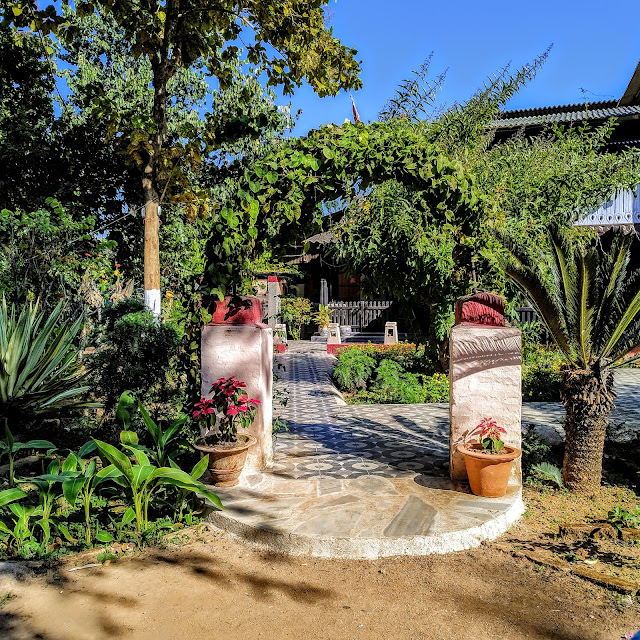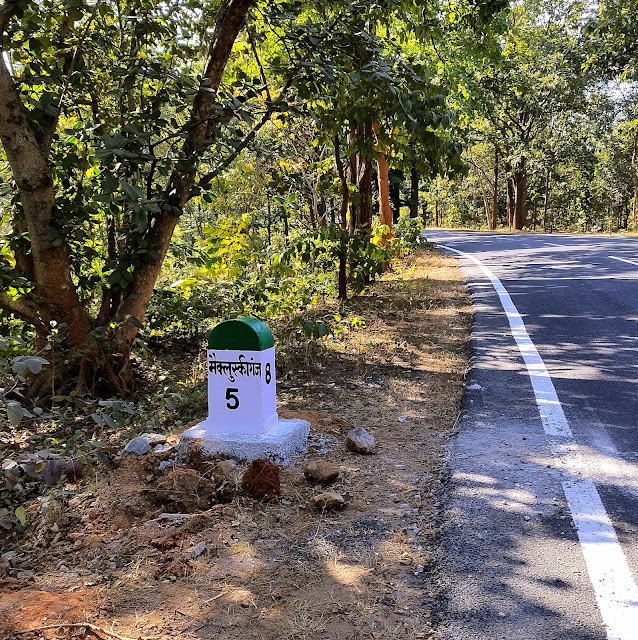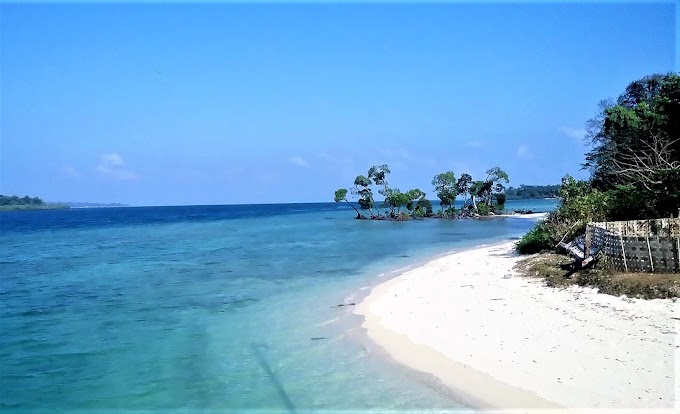McCluskieganj, Jharkhand, is one of the very few destinations in India, which were planned for the Anglo-Indian population. When the British left India, many of the Anglo-Indian people decided to stay back. However, they were not always cordially accepted in the society. That's why they decided to created a new land for themselves - a town amid the forests and hills of Jharkhand. And McCluskieganj was established.
Our Journey Continues
We were at the last phase of our Jharkhand trip, which included the hill resort of Netarhat, pristine forests of Maromar as well as the palace ruins and national park at Betla. The next stop was supposed to be McCluskieganj, often dubbed as Little England or the Mini London of India.
Although McCluskieganj tourism isn't extremely popular these days, it was once a favorite among the tourists, mostly from other parts of Jharkhand and neighboring Bihar and West Bengal.
Kechki Sangam - the Confluence
Kechki Sangam is the confluence spot of two local rivers - Koel and Orga. The spot is located at a distance of about 10 kilometers from Betla and took us around 20 minutes to reach.We were traveling during winter when most of the rivers in Jharkhand had all but dried up. So, at Kechki Sangam, we witnessed the dry and sandy river beds that seemed to stretch to the horizon. A bridge was being constructed over it. People were walking across the river bed at Kechki Sangam to cross the dried-up river. However, water was available at some spots on the river beds. Local people, most women with earthen pots, were flocking there to get some water.
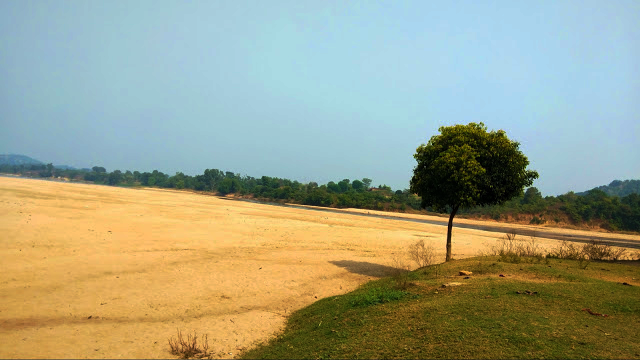
Though there was almost no water in the river during winter, the scene of the vast river bed stretching to the horizon was amazing. And we could imagine how majestic the confluence of the two rivers would appear when there would be heavy rains during the monsoon.
The road was broken and bumpy - not as good as the highway. But as we took the turn, the condition of the road seemed to match perfectly with the changing landscape. There were small houses whose architecture matched the English architectural styles. The appearance of the place made us understand why McCluskieganj is known as the Little England of India. However, it's surely past the heydays and most of the houses are either in ruins or appear dilapidated because of lack of maintenance. In short, McCluskieganj is almost synonymous with a failed promise.
Within a few minutes, Mrs.Rana arranged for a sumptuous lunch of pulao and vegetable curry. It was followed by a stroll across the huge courtyard of Rana's Country Cottage, McCluskieganj. Rana Family's homestay has several amenities. There's a playroom on the first floor. You can also ask for a barbecue to be arranged in the courtyard in the evening.
In the evening, we took a stroll in the courtyard of the cottage and spent our time sitting on the benches in the garden. As the evening descended, McCluskieganj started putting on its cloak of darkness. The sky was adorned with glittering stars - unlike what we see these days in the cities stifled with pollution. And as the darkness started becoming pitch black, we had an early dinner and bade farewell to the tiring but beautiful day.
We had planned to visit McCluskieganj at the end of our Jharkhand tour for a couple of reasons. Firstly, it had a direct train to our home town of Kolkata. And more importantly, we wanted to spend the end of the trip relaxing amid nature.
We continued our stroll during the morning in the garden of Rana's Country Cottage. It was winter and the flowers were in full bloom. And they had some beautiful guests. Butterflies that came in all shades had thronged the flowers to suck nectar. We spent an amazing time watching butterflies.
However, we realized that the platform at the McCluskieganj Railway Station is too short when the Shaktipoonj Express arrived. The compartment where our seats were reserved was outside the platform. So, we started running toward it with all our luggage. However, we knew that the train halts at the McCluskieganj Railway Station for only a couple of minutes. So, we boarded a random compartment from McCluskieganj Station and started moving through the train to reach the seat reserved for us. So, that was the beginning of the end of our Jharkhand Trip, which seemed too good to be true.
If you ask me this question, it will be quite difficult for me to answer.
The silence on the dusty roads, the beautiful DugaDugi river, the warmth of the Rana Family, and the beautiful butterflies on the flowers in a mesmerizing garden - all of these kept on haunting us for a long time even after we had reached our home and started planning the next trip.
Toward McCluskieganj
Beyond Kechki, the road continued in the same way. What changed was the landscape around it. The fields started to grow greener. Our car took a turn and left the highway to move on to a road that runs through those fields. On both sides of the roads, there were forests of high. We drove on a small bridge over the local river - Dega degi. The river hardly had any water, but looked quite great. It is regarded as one of the most popular picnic spots in McCluskieganj.The road was broken and bumpy - not as good as the highway. But as we took the turn, the condition of the road seemed to match perfectly with the changing landscape. There were small houses whose architecture matched the English architectural styles. The appearance of the place made us understand why McCluskieganj is known as the Little England of India. However, it's surely past the heydays and most of the houses are either in ruins or appear dilapidated because of lack of maintenance. In short, McCluskieganj is almost synonymous with a failed promise.
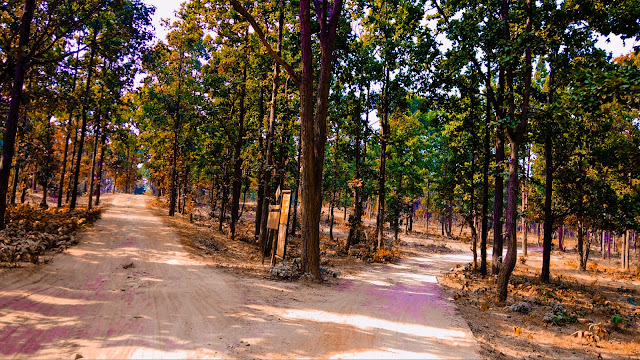 |
History of McCluskieganj
It was the British period when, in 1932, Ernest Timothy McCluskie, decided to establish a town, especially for the Anglo-Indians. He leased land across nine villages on the Chotonagpur belt in Bihar, which were not inhabited by the locals. McCluskie summoned almost 200,000 Anglo-Indians from different parts of India and asked them to settle down there. The objective was to help them, especially the older people, spend their last days in the lap of nature.McCluskieganj was established by the Colonisation Society of India way back in 1933. The objective was to build a place only for the Anglo-Indian communities of India. It was a cooperative society where the Anglo-Indian families could purchase lands and settle down. The initiative was initially successful. Almost 300 Anglo-Indian families arrived in McCluskieganj to settle down there. However, the plans shattered during the Second World War, as most of the inhabitants left India. These days, only about 20 Anglo-Indian families remain.
Where to Stay in McCluskieganj
When you're in McCluskieganj, you can't expect great McCluskieganj hotels for staying. Instead, you can have even better experience of staying in McCluskieganj bungalows.Yes, no matter how fascinating and far-fetched it may sound, but you can actually book rooms in heritage bungalows of McCluskieganj to enjoy your stay.
Many of these heritage McCluskieganj bungalows were constructed by Anglo-Indian families who came here to stay, but had to leave. However, there are quite a few other McCluskieganj bungalows that are owned by other families. These families came later and settled down because they fell in love with the place. Many such families rent out their homes as McCluskieganj homestay offering amazing lodging and foods for tourists.
Reaching Rana's Country Cottage
We drove directly to the guest house we had booked - Rana's Country Cottage. It turned out to be a beautiful house of the Ranas with a separate section for the guests. We were welcomed by the owners Mr.Deepak Rana and Mrs.Rana. We stayed in a room on the ground floor, right in front of a beautiful seating area.Within a few minutes, Mrs.Rana arranged for a sumptuous lunch of pulao and vegetable curry. It was followed by a stroll across the huge courtyard of Rana's Country Cottage, McCluskieganj. Rana Family's homestay has several amenities. There's a playroom on the first floor. You can also ask for a barbecue to be arranged in the courtyard in the evening.
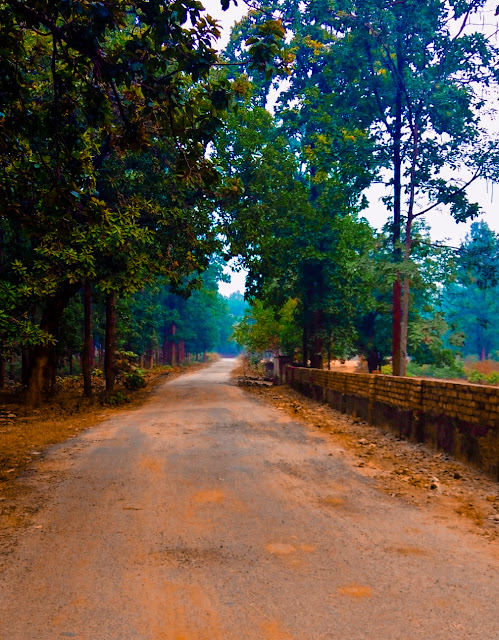 |
McCluskieganj Tourist Spots
We took some rest after lunch and then went to the Duli village nearby, where there's an area called Sarbadharmasthal - which means the place of all religions. It's a small walled area where there's a temple, a mosque, and a Gurudwara standing adjacent to each other. And there's also an area kept aside for a church.We also visited Jagriti Vihar, which was established in 1975 as a rural development center and orphanage. While returning home, we went to the banks of the Dugadugi river, which isn't far away from Rana's Country Cottage.
In the evening, we took a stroll in the courtyard of the cottage and spent our time sitting on the benches in the garden. As the evening descended, McCluskieganj started putting on its cloak of darkness. The sky was adorned with glittering stars - unlike what we see these days in the cities stifled with pollution. And as the darkness started becoming pitch black, we had an early dinner and bade farewell to the tiring but beautiful day.
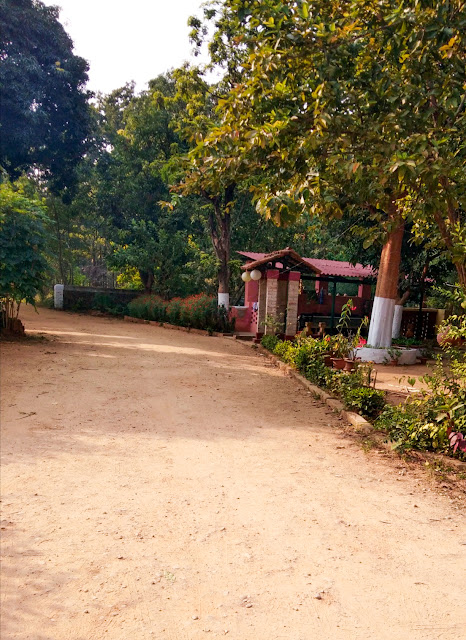 |
The last day of the trip
The next morning, we woke up early and went for a stroll along the road outside Rana's Country Cottage, Mccluskieganj. After some time, we realized, as we were strolling down the road, a fox was strolling parallel to us through the bushes on the roadside. And as we stopped, it stopped to give us a long stare and then vanished in the deeper part of the jungle.We continued our stroll during the morning in the garden of Rana's Country Cottage. It was winter and the flowers were in full bloom. And they had some beautiful guests. Butterflies that came in all shades had thronged the flowers to suck nectar. We spent an amazing time watching butterflies.
Bidding Adieu
Time was running out. We had to catch our train in the afternoon. So, we had a quick chat with Mr.Deepak Rana's mother, the nonagenarian young lady, Kanchan Prava Devi. She hails from the royal family of Tripura and is a cousin to the famous Indian music director, Late R.D.Burman. She enlightened us with the history of McCluskieganj and how the place has evolved over the years.The Final Thrill
We started for the station at around 3 PM to catch the Shaktipoonj Express from McCluskieganj Railway Station. It took us only about 10 minutes by car through the dusty roads of McCluskieganj to reach the small yet beautiful McCluskieganj station, which still has a colonial charm to it.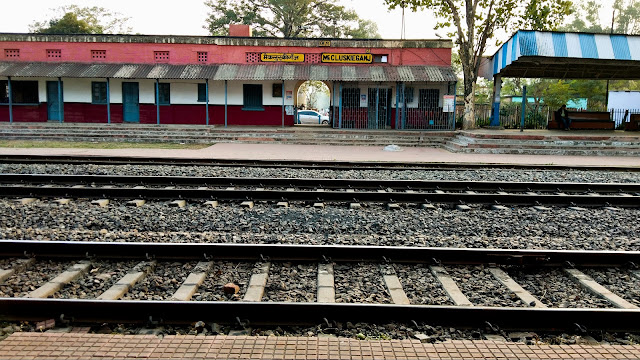 |
The Music of McCluskieganj Lingers on
What's the best thing about McCluskieganj?If you ask me this question, it will be quite difficult for me to answer.
The silence on the dusty roads, the beautiful DugaDugi river, the warmth of the Rana Family, and the beautiful butterflies on the flowers in a mesmerizing garden - all of these kept on haunting us for a long time even after we had reached our home and started planning the next trip.
